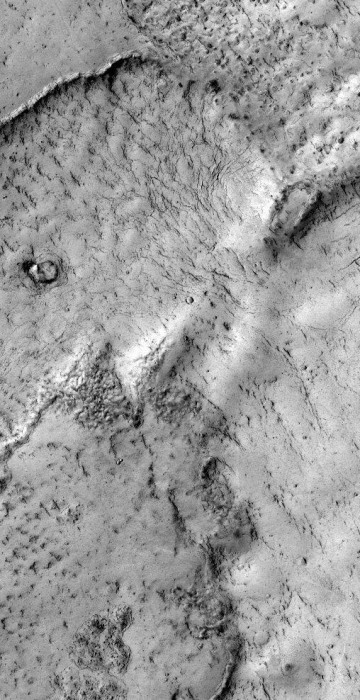
Science News
Month in Space: April 2012

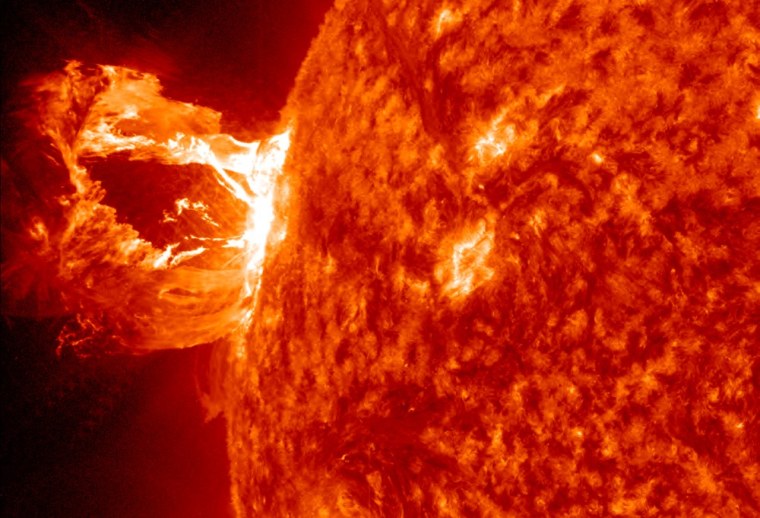
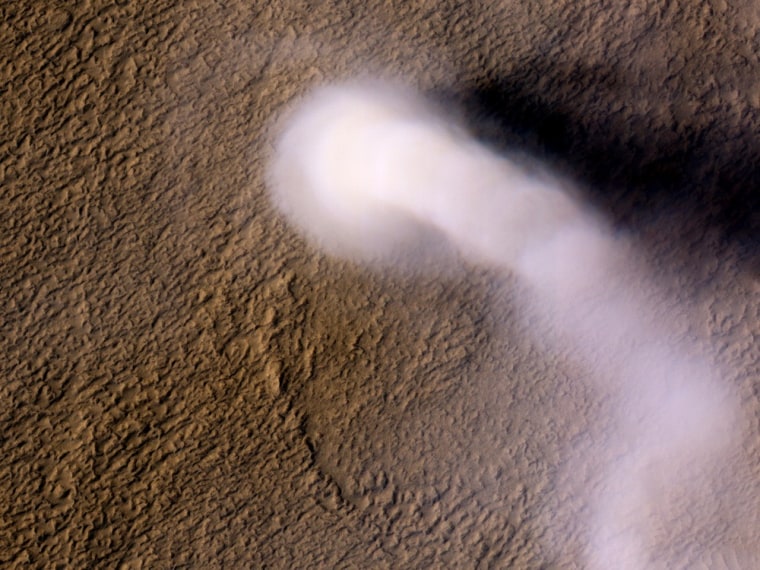
Whirlwind on Mars
A dust devil the size of a terrestrial tornado towers above the Martian surface on a springtime afternoon in Amazonis Planitia. The picture was captured on March 14 by the High Resolution Imaging Science Experiment (HiRISE) on NASA's Mars Reconnaissance Orbiter, and released by the space agency on April 4.
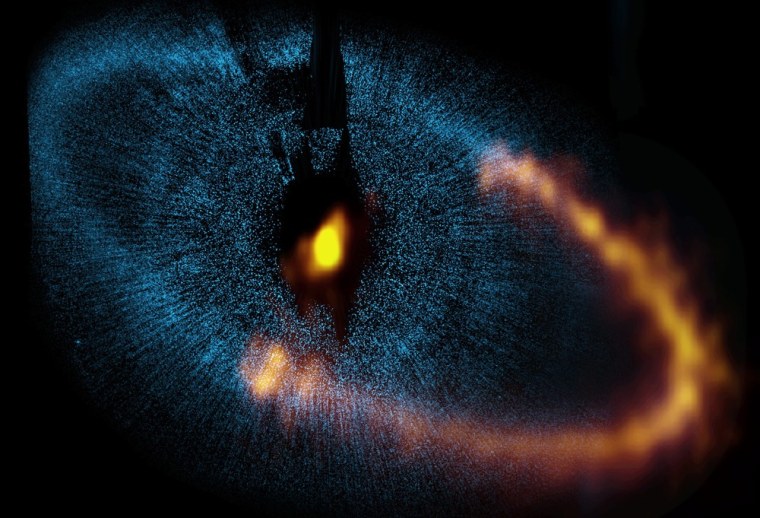
Zeroing in on alien planets
An image from the European Southern Observatory's Atacama Large Millimeter/Submillimeter Array, or ALMA, shows the dust ring around the bright star Fomalhaut in orange. The underlying blue picture is an earlier view obtained by the Hubble Space Telescope. The new ALMA image, released on April 12, has led astronomers to conclude that the dust ring is held in place by two exoplanets. One planet is within the ring, and the other is outside the ring. Astronomers think the planets are bigger than Mars but no larger than several times the size of Earth.
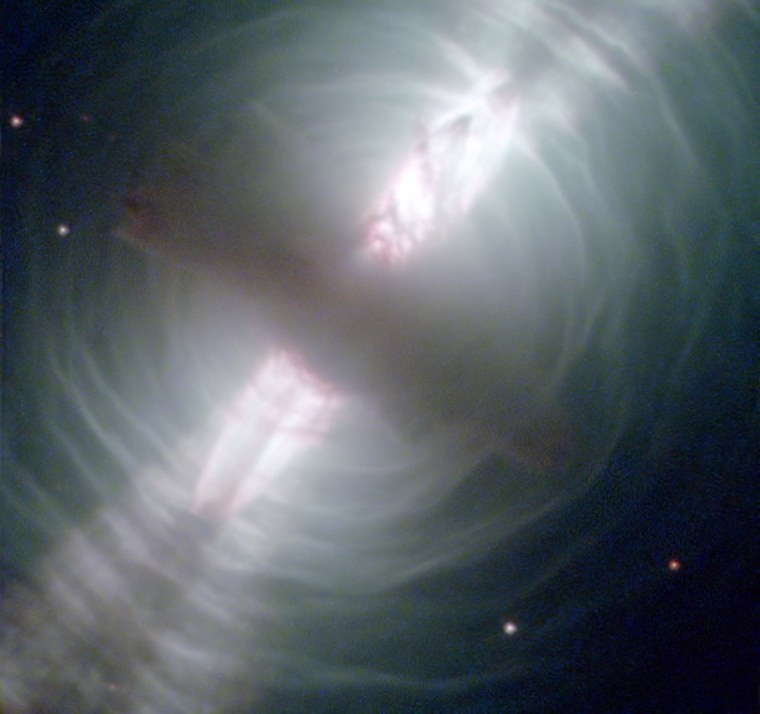
Cosmic Egg
The Hubble Space Telescope has been at the cutting edge of research into what happens to stars like our sun at the ends of their lives. One stage that stars pass through as they run out of nuclear fuel is the preplanetary nebula. This Hubble image of the Egg Nebula, released April 23, shows one of the best views to date of this brief but dramatic phase in a star’s life.
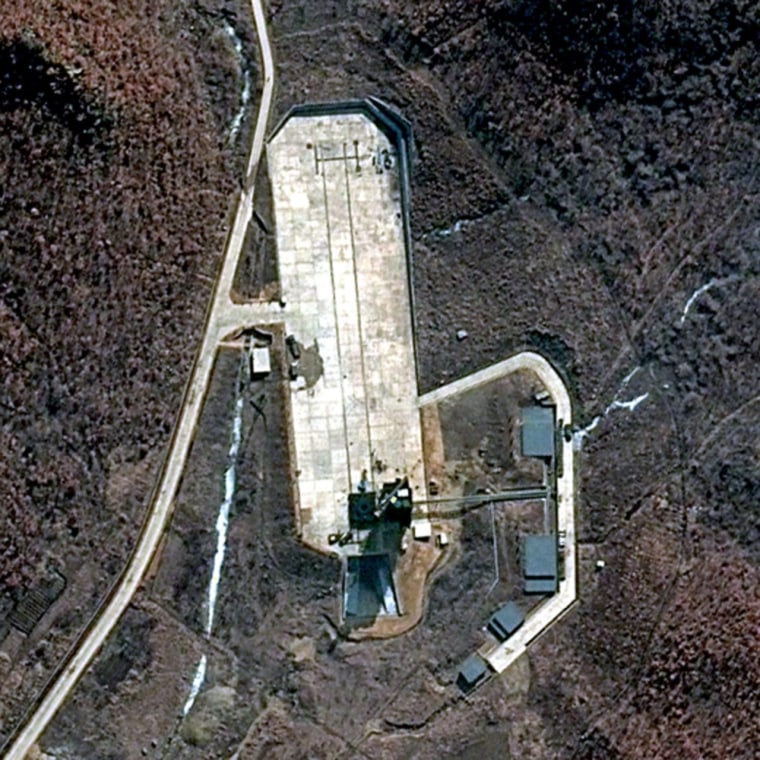
North Korea's launch pad
A March 28 satellite image from DigitalGlobe shows the North Korean launch site at Tongchang-ri. North Korea launched its Kwangmyongsong-3 satellite on April 13, but the rocket fell apart within minutes, bringing the controversial mission to a premature end.
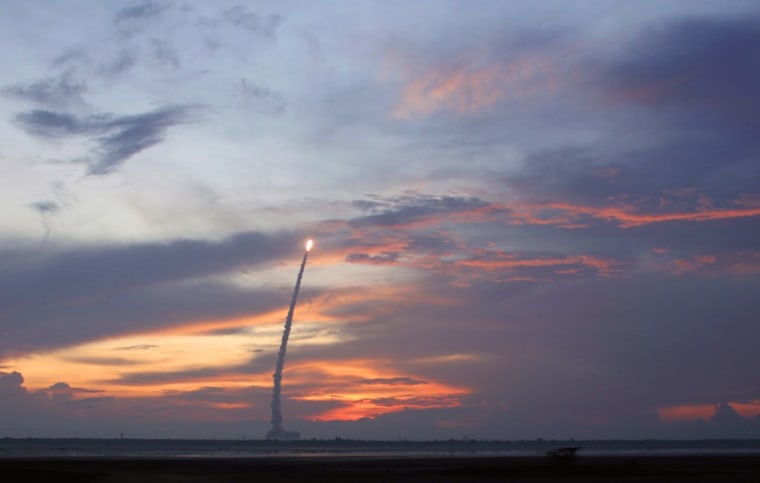
Liftoff from India
India's Polar Satellite Launch Vehicle C-19 blasts off on April 26, lofting the country's first radar imaging satellite RISAT-1 into orbit from the Satish Dhawan space center at Sriharikota, north of the southern Indian city of Chennai. The remote sensing satellite is equipped with a synthetic aperture radar that can look through clouds and capture Earth imagery day and night.

Tracking Discovery
Sixth-graders visiting the U.S. Capitol from the Stratford Academy in Macon, Ga., watch the final voyage of the space shuttle Discovery as it soars above Washington on April 17. Discovery, the world's most traveled spaceship, was retired from service last year and is now an attraction at the Smithsonian National Air and Space Museum's Stephen F. Udvar-Hazy Center in Chantilly, Va., next to Dulles International Airport.
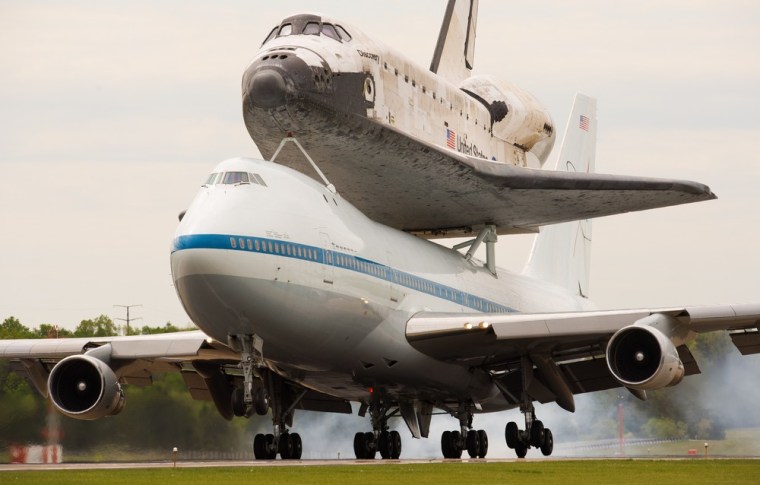
Last landing
The space shuttle Discovery makes its final landing on the back of a modified Boeing 747 jet at Washington's Dulles International Airport on April 17. After landing, Discovery was towed to the Smithsonian National Air and Space Museum's Steven F. Udvar-Hazy Center, next to the airport.
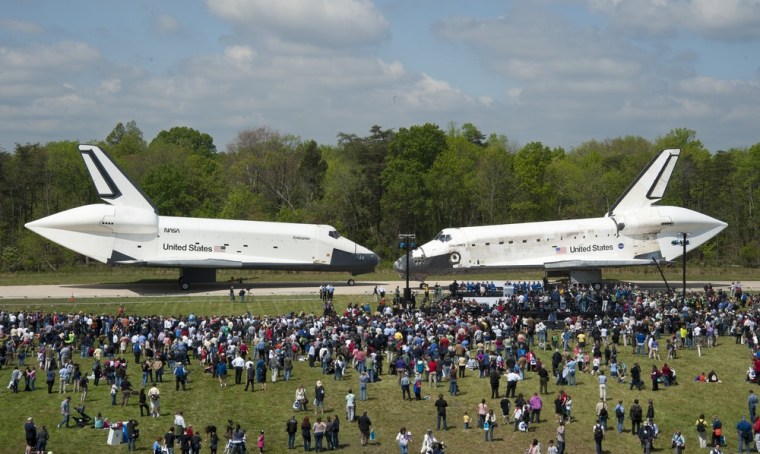
Nose to nose
The space shuttles Enterprise, left, and Discovery sit nose-to-nose at the beginning of a transfer ceremony at the Smithsonian's Steven F. Udvar-Hazy Center on April 19. Enterprise, which had been on exhibit for years at the museum in Virginia, was replaced by Discovery.
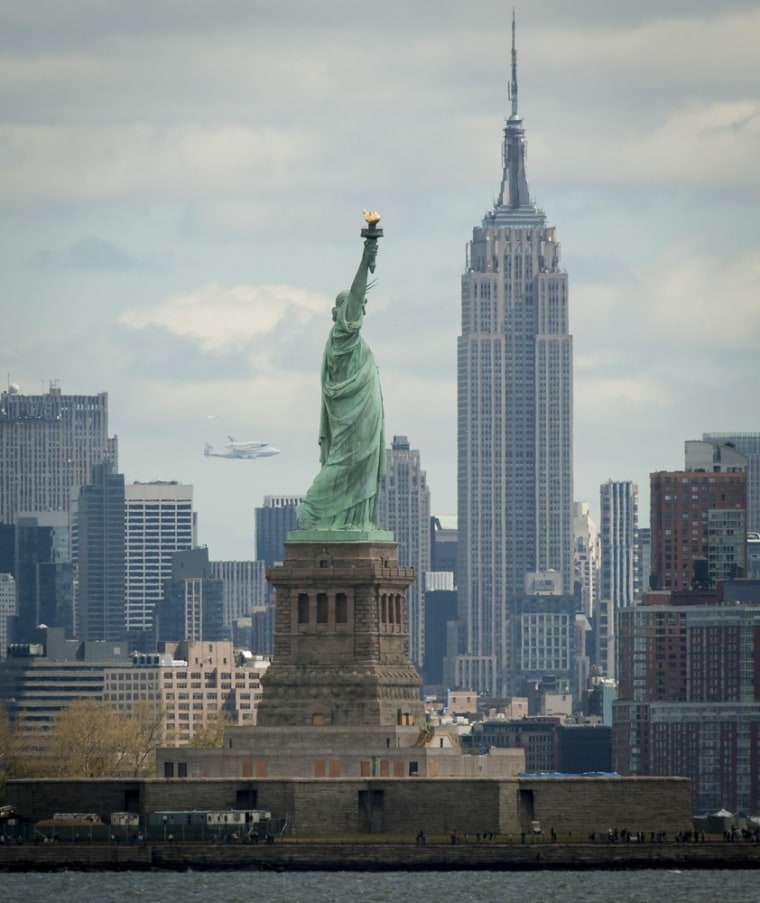
Enterprise hits the Big Apple
The prototype space shuttle Enterprise, mounted atop its modified 747 carrier jet, is seen off in the distance behind the Statue of Liberty and the Empire State Building on April 27. Enterprise was the first shuttle built for NASA and performed test flights in the atmosphere, but was incapable of spaceflight. For years the craft was housed at the Smithsonian's Steven F. Udvar-Hazy Center near Washington. In April, it was moved out to make room for the shuttle Discovery. The Enterprise eventually will be put on display at the Intrepid Sea, Air and Space Museum in New York.
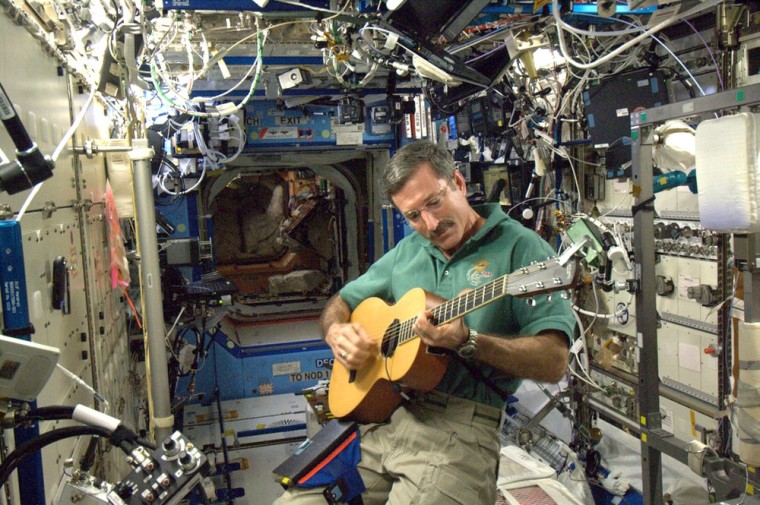
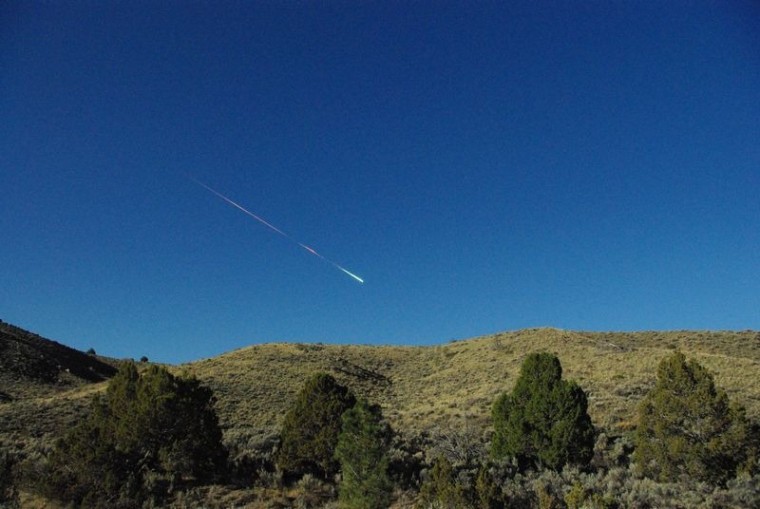
Fireball over Nevada
A meteor blazes over Reno, Nev., at around 8 a.m. PDT on April 22. Reports of the fireball came in from as far north as Sacramento, Calif. and as far east as North Las Vegas, Nev. Bill Cooke of the Meteoroid Environments Office at NASA's Marshall Space Flight Center estimated that the object was about the size of a minivan, weighed in at around 154,300 pounds and at the time of disintegration released energy equivalent to a 5-kiloton explosion of TNT.
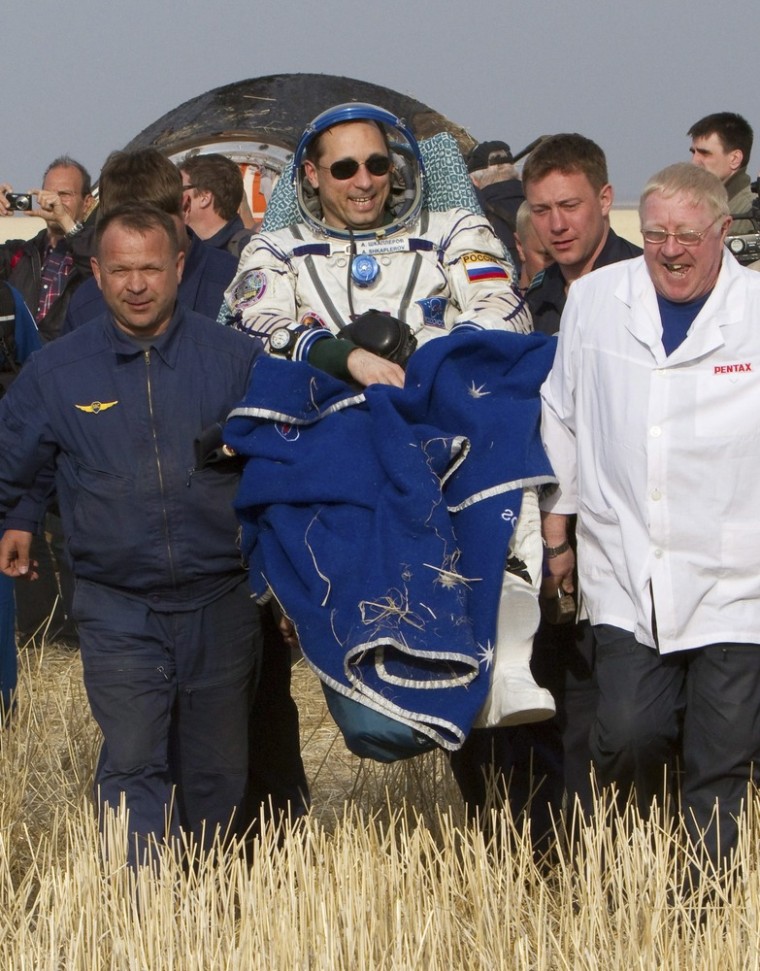
Down to Earth
Ground personnel carry Russian cosmonaut Anton Shkaplerov from his space capsule shortly after landing outside the town of Arkalyk, Kazakhstan, on April 27. Shklaplerov, fellow cosmonaut Anatoly Ivanishin and NASA astronaut Dan Burbank landed safely in a Russian Soyuz capsule after a stay of over five months aboard the International Space Station. Returning spacefliers are traditionally carried from the landing site while they readjust to Earth's gravity.
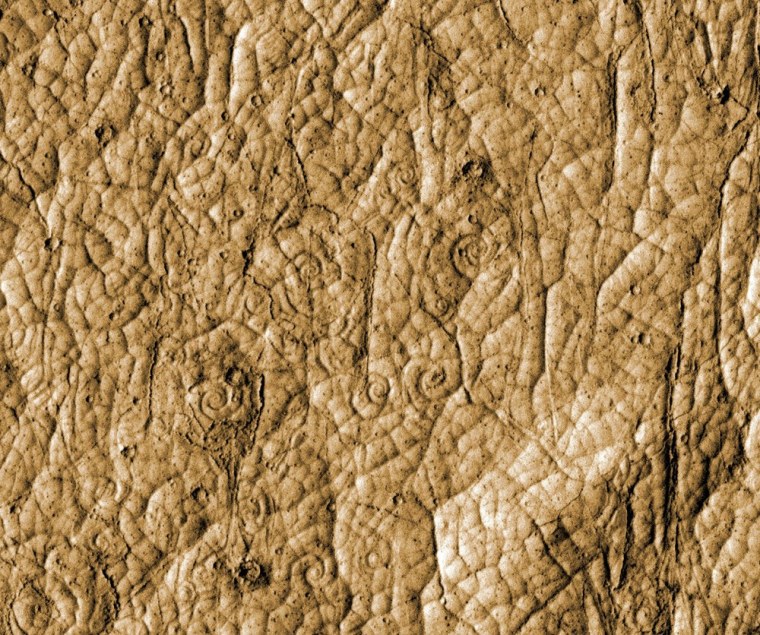
Strange swirls on Mars
An image from the HiRISE camera on NASA's Mars Reconnaissance Orbiter, released April 26, shows lava flows in the shape of coils located near Mars' equatorial region. Analyzing high-resolution images of the region, researchers have determined the area was sculpted by volcanic activity in the recent geologic past. This is the first time such geologic features have been discovered beyond Earth.
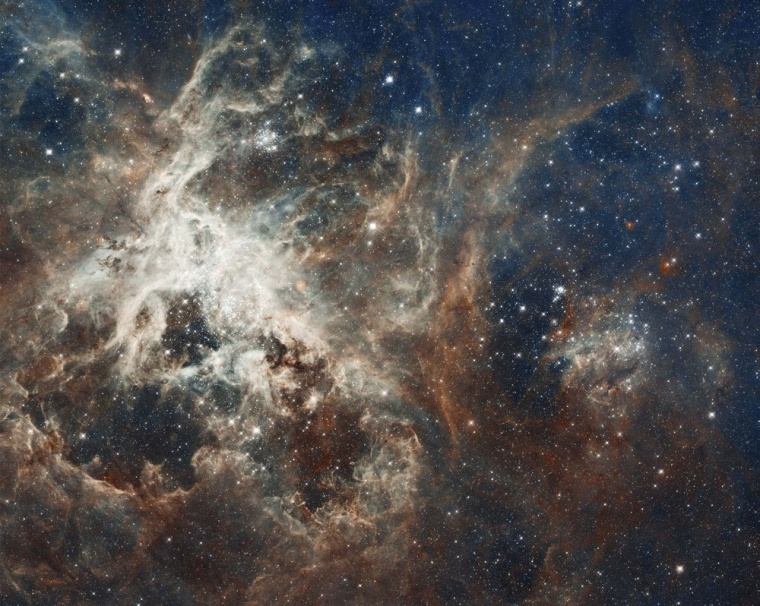
Tarantula in space
A Hubble Space Telescope composite image shows a stellar breeding ground in 30 Doradus, located in the heart of the Tarantula Nebula, 170,000 light-years away in a satellite galaxy known as the Large Magellanic Cloud. The telescope imaged 30 separate fields with its Wide Field Camera 3 and Advanced Camera for Surveys during October 2011 to produce this picture. The image was released April 17 in honor of Hubble's 22nd anniversary.
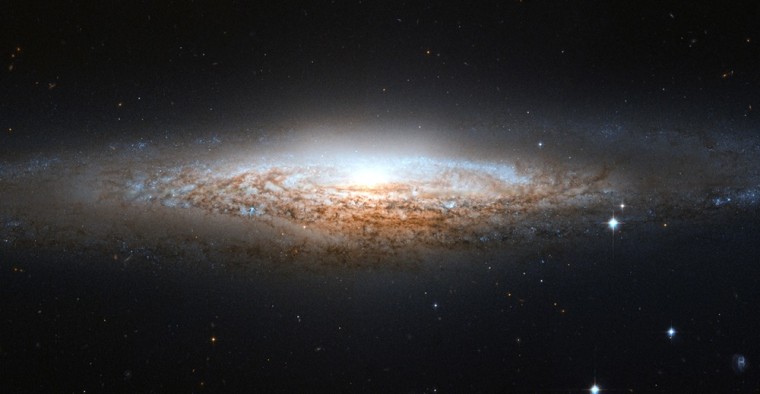
UFO Galaxy
NGC 2683 is a spiral galaxy seen almost edge-on, giving it the shape of a science-fiction spaceship. That's the reason it was nicknamed the "UFO Galaxy." It's 35 million light-years away in the northern constellation Lynx. This picture of the galaxy, captured by the Hubble Space Telescope, was released March 26 as the European Hubble team's Picture of the Week.
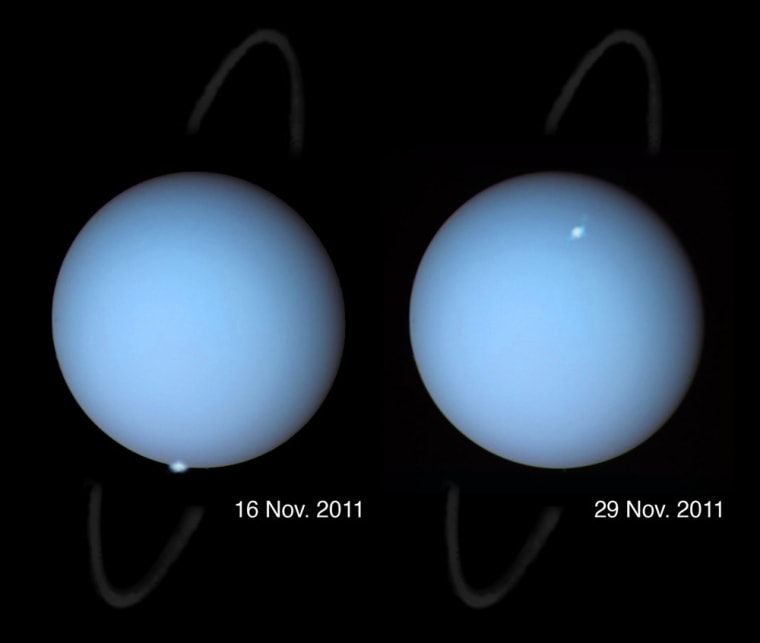
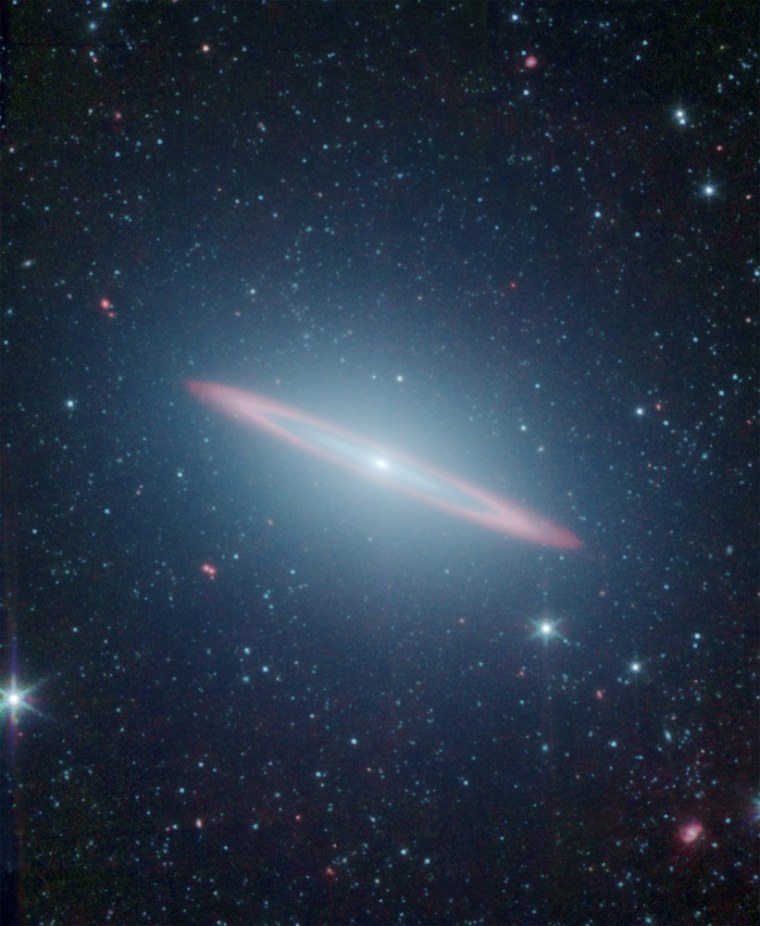
A galactic double-take
This infrared vision from NASA's Spitzer Space Telescope, released April 24, shows the Sombrero Galaxy in the constellation Virgo. The galaxy was given its nickname because in visble light it looks like a wide-brimmed hat. The infrared imagery shows that the galaxy is in fact two galaxies in one: an inner disk that is seen here in a shade of blue-green, and an outer disk in red.
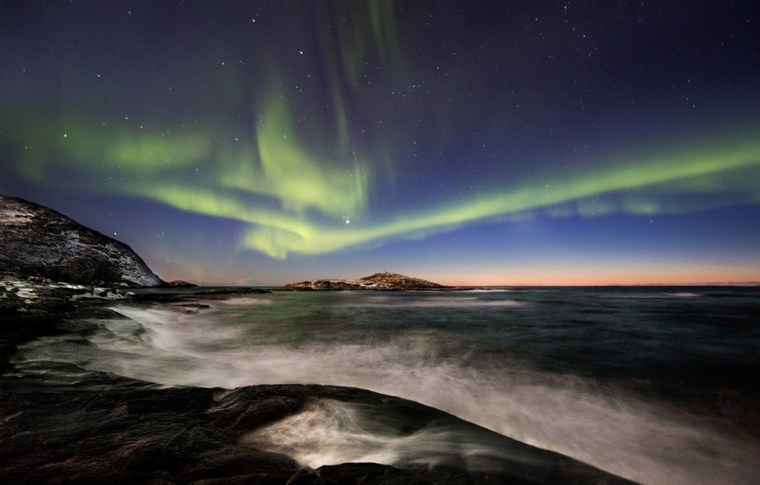
Norwegian lights
Thorbjørn Haagensen took this picture of the northern lights on April 3 from Hillesøy, close to Tromsø in northern Norway. The winter season is prime time for auroral displays, but with the onset of spring, the northern lights begin to pale up north. "Beginning in the middle of May, the midnight sun brings sunshine all night long," Haagensen said.